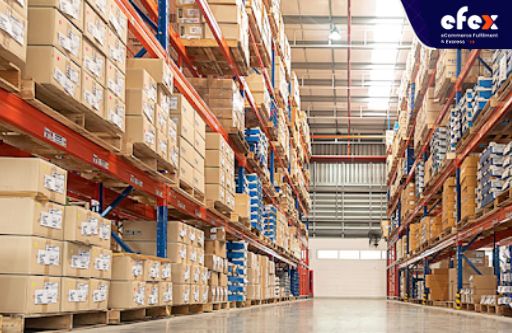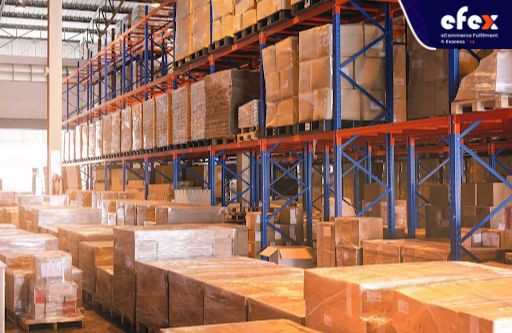
More Helpful Content
You may find a ton of businesses willing to buy your excess stock products if you search for "excess inventory" in almost any search engine. This will give you an immediate cash infusion and make more room in your warehouse. However, at what cost? The possibility of it being out of date is just one of the drawbacks of having too much inventory.
Although it's not the wisest move, selling excess inventory is a quick approach to lower your inventory levels and solve cash flow issues. This frequently causes a big impact on your profitability!
In this article, we'll look at proactive steps you may take to cut back on excess and obsolete inventory in your company. Our strategy involves taking a few easy steps to avoid the issue from ever developing in the first place.
Inventory that has been deemed surplus or outdated being suitable with company standards and prior practices is referred to as excess and obsolete inventory.

The amount of such disposable items on hand will be deemed excess and obsolete to the level that it exceeds the lower of:
The number of these durable parts on hand will be deemed excess and outmoded to the extent that it is greater than the lesser of:
👉 Read More: What Is The Difference Between Periodic And Perpetual Inventory Systems
👉 Read More: What Is Centralized Inventory? Benefit And Drawback
👉 Read More: How Can You Disposal Of Obsolete Inventory?
You put in a lot of effort, prepared outstanding contracts, and successfully negotiated the terms of payment. At that point, you understand that surplus and outdated inventory come with a double price.
For manufacturers, excess and obsolete inventory may account for 15–25% of total stock. Storage facilities frequently anticipate that 15% of their inventory will be returned, refused, or even become outdated. Whenever the cost of warehousing, damage, shrinkage, and time worth of money is taken into account, the overall cost of this stock may be as great as 25%.

When considering the amount of money invested in goods that cannot be sold to customers, the effects of excessive and expired inventory are felt most acutely. This inventory frequently spends a lot of time hidden away in a dingy area of the plant or warehouse. To alleviate the company of this load is rarely made the supply chain's primary goal.
Make sure your inventory can be disposed of safely first. Before moving forward, get professional guidance if there is any chance that it could be risky.

When choosing this option, consider the value of the discarded components versus the cost of the adjustments. If the cost of modifying outmoded goods worth $5,000 to sell them for $10,000 is going to be $25,000.
👉 Read More: What Is In-Transit Inventory? Example And Formula
You start to consider how you might prevent this circumstance from happening again as you return to your workplace. You will first focus more on statistics on product demand. You weren't looking at the figures for demand and the declining patterns, and neither was your staff.
Every time you reach the end of manufacture for an item, you continue to have excess inventory since every item does have a life cycle. If no one on your staff has arithmetic skills, it can be worthwhile to hire an analyst from outside your organization.
You discover that you can present a list of all the things you sell together with the rate where each item sells using inventory and sales data.
In the following six months, certain things might sell at the rate of 10 each day while others would only sell 2. You will be capable of looking at your inventory utilization rates and accurately determining how many inventory days that "great deal" represents the next time the provider contacts and offers "an outstanding discount on a big purchase."
When you have to hold onto cash inside inventory for an extended period of time, the duration of inventory can occasionally be too big a risk. As a professional purchasing professional, you pledge to investigate forecasting techniques and computations of inventory levels, or at the very least, to find the necessary knowledge.
👉 Read More: What Is Inventory Allocation? Methods And Benefits
Ultimately, you come to the conclusion that nobody was actually monitoring your inventory accuracy. The figures are correct on the balance sheet since you only count the cycle once a year, just before the close of the financial year. You simply cannot ensure how precise the levels of inventory are in your system of inventory management or custom database records throughout the year. You guarantee to train yourself on the ABC inventory process.
With your newly found dedication to supply chain statistics, you make the commitment to build an inventory as well as a product demand platform so that you always have access to these crucial figures. With this new information, you will make wiser choices.
The ABC Company was a modest, family-run firm thirty years ago. They continued to run the company largely in the same manner as before. They understood that something needed to change three years ago. The company was not making money anymore. They had their business data saved but lacked the expertise to analyze their inventory as well as product profitability in depth.
Tracey Smith coming from Numerical Insights LLC used this data to notify the owners about whose inventory was "gone," the rates where each item went, and the total number of days that each item was in stock. A sales volume-profit analysis also revealed areas where this company could cut back on the variety of sizes they were selling.
By guiding customers toward higher-margin alternatives, low-margin and low-volume, products could be phased out.

It's time to search for ways to make your demand forecasting better if it frequently results in either overstocking or understocking. To begin with, estimating demand using the number of stock days is an overly straightforward and ineffective technique.
Instead, you should think about switching to demand forecasting methods that will take market demands, seasonality, and product promotion into account.
Carrying too much inventory won't help your supplier lead times, so don't do it. Instead, you should approach this issue by:
Without stocking large quantities of each product in your warehouse, it is still possible to provide high service quality and achieve outstanding stock availability. The secret is to define your stocking policies using inventory optimization approaches.
Based on multiple factors, including demand categories, demand volatility, pick frequency, as well as cost to sell, you must decide which inventory goods to carry. This enables you to decide how much of each item to keep in inventory in your warehouse based on how effective it performs and how it costs the company.
It might be challenging to stop the accumulation of surplus inventory if you have a multi-tier supply chain or distribute your goods over several sites. For instance, it's very usual for inventory planners to order some more and exaggerate their projections if you have decentralized ordering to minimize the risk of running out. But if you do this at every stock site, these "small extras" will add up to a lot of excess stock.
If your minimum purchase numbers are set too high, you can end yourself with excess inventory. Try to negotiate if this is the situation! Calculate: It might be preferable to pay a much higher unit price for lesser order quantities rather than to have money held in inventory that isn't moving across the warehouse at a sufficient rate.
Businesses often struggle with excess and obsolete inventory, so taking proactive measures to avoid stock accumulation can have significant advantages. A high-profit margin will be ensured by better cash flow and inventory turnover ratio, more working capital, and lower storage expenses. Hope you have a good time with EFEX.


